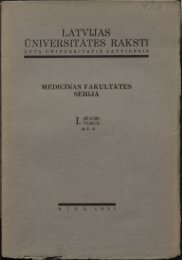You also want an ePaper? Increase the reach of your titles
YUMPU automatically turns print PDFs into web optimized ePapers that Google loves.
4<br />
Manchu languages. This matter of fact proves clearly that these<br />
peoples are strangers, who have absorbed the Palaeo-Asiatic aborigines.<br />
This linguistic conclusion is supported by Chinese history, which states<br />
that the Jüchens (Jučen), the predecessors of the Manchus, lived in<br />
the tenth century A. D. only in the northwestern part<br />
of Manchuria.<br />
The Chinese historical work „Ch'in-ting Man-chou yüan-liu k'ao",<br />
compiled by order of the Manchu emperor Ch'ien-lung about the year<br />
1777, enumerates indeed many<br />
appearance of the Jüchens,<br />
Manchu tribes in Manchuria before the<br />
but these tales are properly patriotic calcu-<br />
lations of the Manchu government and remain to be proved. W. Radloff<br />
refers with weighty reasons the Kytais and Tatabies, the eastern<br />
neighbours of the old Turks in the eigth century A. D. to the Tungus-<br />
Manchu group, but the boundaries of these peoples are unknown (Die<br />
alttürkischen Inschriften der Mongolei. P. 428 —9). At all events we<br />
have no reason to believe that the Tungus-Manchu<br />
the Pacific Ocean aready in the tenth century.<br />
tribes had reached<br />
For many centuries the Negidals have been neighbours<br />
of the<br />
Manchurian Oroches, Goldis and Olchas, the nearest relatives of the<br />
Goldis,<br />
and have borrowed from them numerous words, which for the<br />
most part are found also in the Manchu,<br />
but are unknown in other<br />
Tungusian dialects. Characteristic Manchu elements are the following<br />
Negidal loan-words: kalim a whale, adzin the great sturgeon beluga,<br />
davathe Amoor salmon,<br />
džabdan a viper, šapki a. netting needle, kotil a<br />
sail, kamnun fish-glue, taktu a barn, kolan a chimney, paga<br />
a window,<br />
dörö a table, tönku a stool, söktöun a carpet, hausan paper, hadža<br />
the scissors, joxan wadding, hontaxa hemp, opa flour, lata groats,<br />
töngköre a fiddle. In the Negidal, Oroche, Olcha and Goldi are found such<br />
words as: komaka a stag, avata a black fox,<br />
salmon, kačita the fish kasatka, xangu a carp, oksaji<br />
ogda a boat, geol and Söul rudders,<br />
colâîxi a polecat, okojo a<br />
an owl, čupai all,<br />
oton a vessel, xupen a thread.<br />
The following words seem to be limited to the Negidal<br />
and Oroche:<br />
kota a seal, džukin an otter, saxanan a taimen, noxun a hen, ölbönö<br />
a sail, coxaun a chisel, atpuxi<br />
a besom, dodoxon and kondzoxon<br />
vessels. Considering that these loan-words are composed<br />
of local<br />
zoologicai names and terms of Chinese culture, we see that the Negidals<br />
reached the lower basin of the Amoor later than the Manchu tribes.<br />
At the present<br />
time the Negidals are separated from the Oroches by<br />
the Olchas, but the loan-words of the last group<br />
show that in former<br />
times the Negidals<br />
and the Oroches were neighbours. The same is<br />
proved even by the phonetic law that the original consonant r


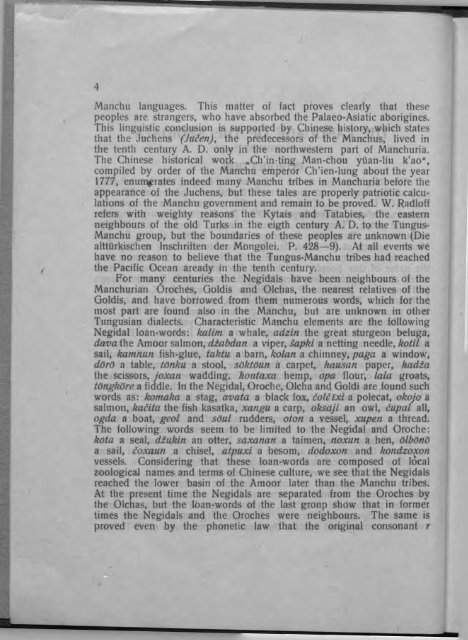
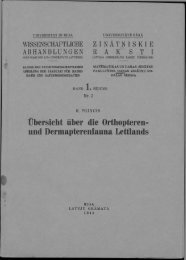
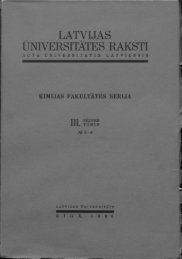
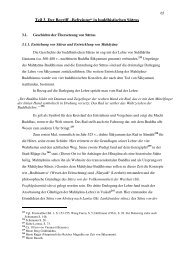
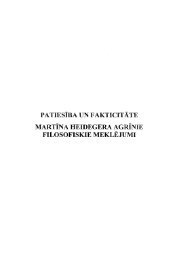
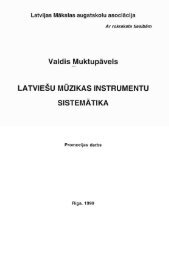
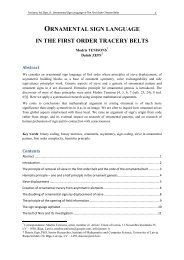
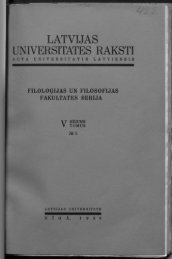


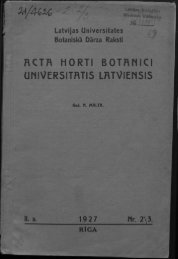
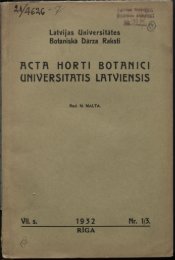
![LATVIJAS] - DSpace](https://img.yumpu.com/11778577/1/190x249/latvijas-dspace.jpg?quality=85)
